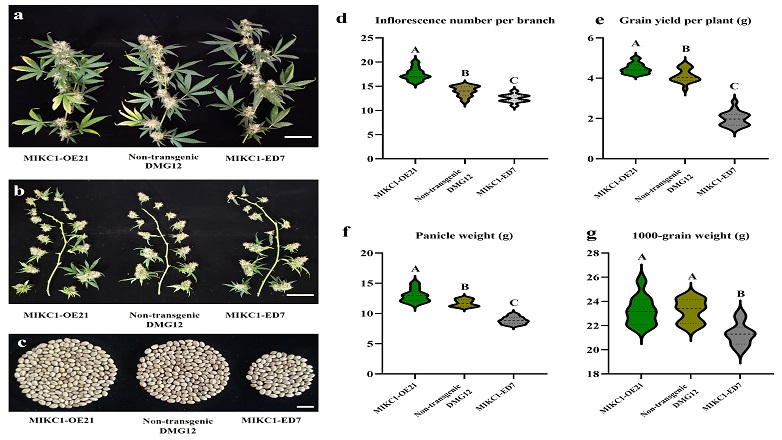
Recently, researchers from Institute of Bast Fiber Crops, Chinese Academy of Agricultural Sciences (IBFC, CAAS) cloned the first yield-related gene and identified its network in Cannabis.
At present, the medical Cannabis market is one of the fastest-growing markets worldwide with a $20.2 billion market value forecast in 2025. Female inflorescence is the primary output of medical Cannabis. Hundreds of cannabinoids are produced and accumulated in the glandular trichomes on inflorescences. However, no genes regulating inflorescence development and grain production have yet been cloned in Cannabis. Experts from IBFC cloned the first gene for Cannabis inflorescence development and yield using a map-based cloning approach. As a powerful tool for gene function study, CRISPR technology was used to create mutants and explore genetic regulatory networks in this study (Fig.1).
The study found that a single dominant allele, CsMIKC1, was able to promote the production of more inflorescences per branch without decreasing the average panicle weight. The functions of the CsMIKC1 allele were validated by over-expression of the gene in transgenic Cannabis. Meanwhile, the dramatic effects of CsMIKC1 on inflorescence development and grain yield were detectable in the transgenic plants. The discovery that CsMIKC1 regulates inflorescence development and yield is a landmark in Cannabis research, especially considering that CsMIKC1 is the first gene discovered that can affect Cannabis yield. This study provides substantial insight into the molecular mechanisms regulating inflorescence development in Cannabis. These findings also represent new knowledge in the fields of developmental biology and plant science.
The research was supported by the earmarked fund for the China Agriculture Research System and National Natural Science Foundation of China projects, and so on.
The study entitled “ CsMIKC1 regulates inflorescence development and grain production in Cannabis sativa plants” has been published online in Horticulture Research and can be accessed through the following link: https://academic.oup.com/hr/advance-article-abstract/doi/10.1093/hr/uhae161/7691881?utm_source=""advanceaccess&utm_campaign=hr&utm_medium=email

Fig.1. Performance of CsMIKC1 overexpressing transgenic plants and CsMIKC1 mutants in the greenhouse

